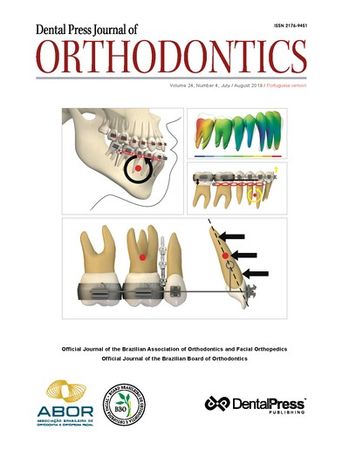New guidelines for systematic reviews and farewell to interviews
Editorial
The job of an Editor-in-Chief of a scientific journal is not restricted to facilitate the workflow of manuscript submission, assess reviewer’s suggestions and make final approval/rejection decisions. In addition to this, there is also a large amount of managing tasks, some of them dedicated to improve the positioning of the journal in the rank of publications of its specialty which involves bibliometric indexes. For the regular reader, this does not seem to make much difference, being nothing more than a series of bibliometric jargon. On the other hand, for the academic community, it is...
Autores: Flavia Artese, Carlos Flores Mir,





The job of an Editor-in-Chief of a scientific journal is not restricted to facilitate the workflow of manuscript submission, assess reviewer’s suggestions and make final approval/rejection decisions. In addition to this, there is also a large amount of managing tasks, some of them dedicated to improve the positioning of the journal in the rank of publications of its specialty which involves bibliometric indexes. For the regular reader, this does not seem to make much difference, being...
Leia mais
Knife-edge or blunt root resorptions characterize ameloblastomas and are pathognomonic for this tumor, because they differentiate ameloblastomas from simple bone cysts, odontogenic keratocysts and nasopalatine duct cysts, which do not lead to resorption of involved teeth. Despite the very high frequency and importance of these characteristics for a differential diagnosis, a microscopic examination should also be conducted before defining the diagnosis and the treatment plan for these cases....
Leia mais
Objective: The aim of this study was to compare the effects of three enamel etching modes — laser-etch, self-etch and acid-etch (5, 10 and 15 s) — on bracket bonding, using a universal adhesive. Methods: Eighty-four maxillary premolars were randomly divided into seven groups (n=12) based on the etching method and the adhesive used for bracket bonding. After water storage and thermocycling, shear bond strength was measured, and adhesive remnant index scores on debonded enamel were...
Leia mais
Objectives: This review aimed at evaluating changes in alveolar bone thickness after completion of orthodontic treatment. Methods: Only prospective clinical studies that reported bone thickness in adult patients undergoing non-surgical orthodontic treatment were considered eligible. MEDLINE, EMBASE and LILACS databases were searched for articles published up to July 2018. Results: A total of 12 studies met the selected criteria. Most of the studies showed that orthodontic treatment produces...
Leia mais
Introduction: Conventional direct and indirect bonding techniques fail to obtain the ideal bracket position. Objective: To compare the accuracy of virtual and conventional direct bonding of orthodontic accessories. Methods: A single virtual configuration (dental mannequin with Class I malocclusion) served as basis for generating the reference model (treated virtually) and the intervention models (10 digital models and 10 solid models, obtained by means of prototyping). A total of 560 teeth...
Leia mais
Objective: The present study aims at using cone beam computed tomography (CBCT) to analyze the maxillomandibular characteristics present in adults with mandibular asymmetries and different sagittal jaw relationships. Methods: 360 patients were selected and divided into three groups (Class I, Class II, and Class III), with 120 individuals per group. The groups were then subdivided according to the intensity of lateral deviation of the gnathion point, into: 1) relative symmetry, 2) moderate...
Leia mais
Objective: The purpose of this study was to establish the association between sagittal and vertical skeletal patterns and assess which cephalometric variables contribute to the possibility of developing skeletal Class II or Class III malocclusion. Methods: Cross-sectional study. The sample included pre-treatment lateral cephalogram radiographs from 548 subjects (325 female, 223 male) aged 18 to 66 years. Sagittal skeletal pattern was established by three different classification parameters...
Leia mais
Objective: The objective of this study was to formulate experimental orthodontic bracket adhesives and test their mechanical properties, fluoride release and antibacterial activity. Methods: Four experimental antibacterial orthodontic bracket adhesives were prepared with different compositions of synthesized antibacterial monomers replacing total 5% of dental monomers in the control Transbond XT (3M): 5%C11, 3.5%C11+1.5%C2, 5%C16, and 3.5%C16+1.5%C2. Transbond XT alone was used as control....
Leia mais
This study discusses the role of orthodontic treatment as an adjunct to the control and treatment of periodontal disease conditions, and describes a clinical case of severe anterior mandibular crowding and periodontal disease followed up for nine years and three months after orthodontic treatment completion. Malocclusion impaired proper dental hygiene, which led to bone loss and development of a periodontal abscess between mandibular canines and lateral incisors. After scaling and root...
Leia mais
It is undeniable that extra-alveolar mini-implants anchorage has revolutionized Orthodontics. Correspondingly, the proper understanding of mini-implants biomechanics allowed to broaden the range of dental movements as never seen before in clinical practice. However, in order to produce better treatments, especially regarding the effects in occlusal plane, it is important to be aware of the numerous possibilities of applying force systems based on skeletal anchorage. Thus, this paper aims to...
Leia maisCopyright © 1998 - 2022 DentalGO | Todos Direitos Reservados. DentalGO é uma marca Dental Press